
AI-powered solutions associated with or embedded within NUS Libraries subscribed databases enhance research process by extracting key insights from individual articles, synthesizing multiple search results and assisting in building search queries etc.
"The two most common types of AI tools introduced are (a) those that create, alter or assist search queries, and (b) those that summarize results sets or items."
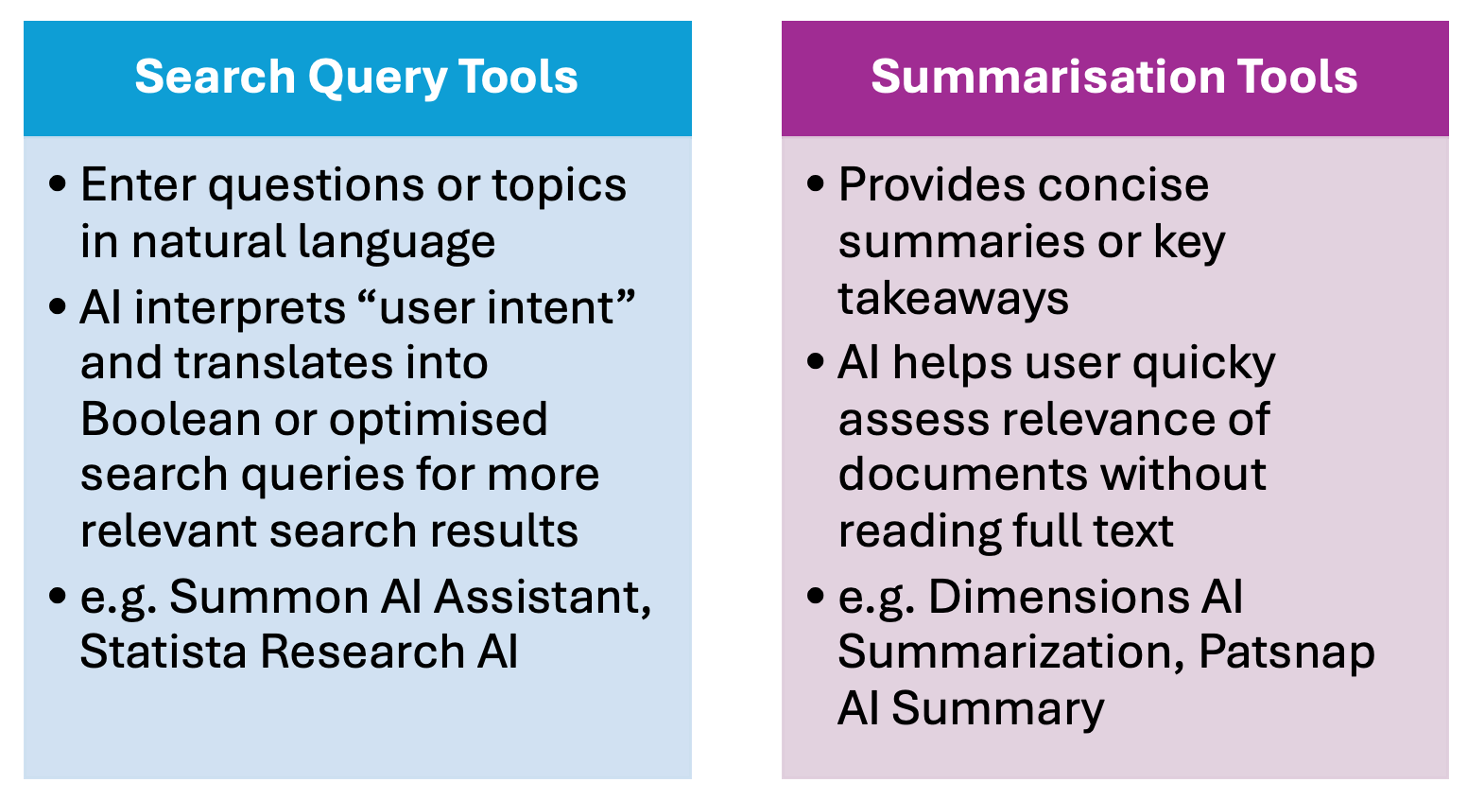
Taylor, Jaime, et al. ‘A Survey of AI Tools in Library Tech: Accelerating into and Unlocking Streamlined Enhanced Convenient Empowering Game-Changers’. Journal of Electronic Resources Librarianship, May 2025, pp. 1–14. DOI.org (Crossref), https://doi.org/10.1080/1941126X.2025.2497738.
For a recording by NUS Libraries on this topic, please refer to "AI for Smarter Literature Search" workshop here which covers:
Do note that this was conducted in March 2025 and there may have been developments since.
NUSearch+ is a unified platform by NUS Libraries that enhances access to diverse resources across GLAM+ (Galleries, Libraries, Archives, Museums and Performing Arts). This integration of collection provides a more cohesive user experience, simplifying research and discovery while allowing seamless exploration of resources across different collections and domains.

Summon Research Assistant is an AI-enhanced discovery tool of NUSearch+ that is designed to enhance research efficiency by summarizing relevant query responses and highlighting the most pertinent resources.
To start using it, simply click the Summon Research Assistant icon located in the NUSearch+ interface. You can log in using your NUS account.
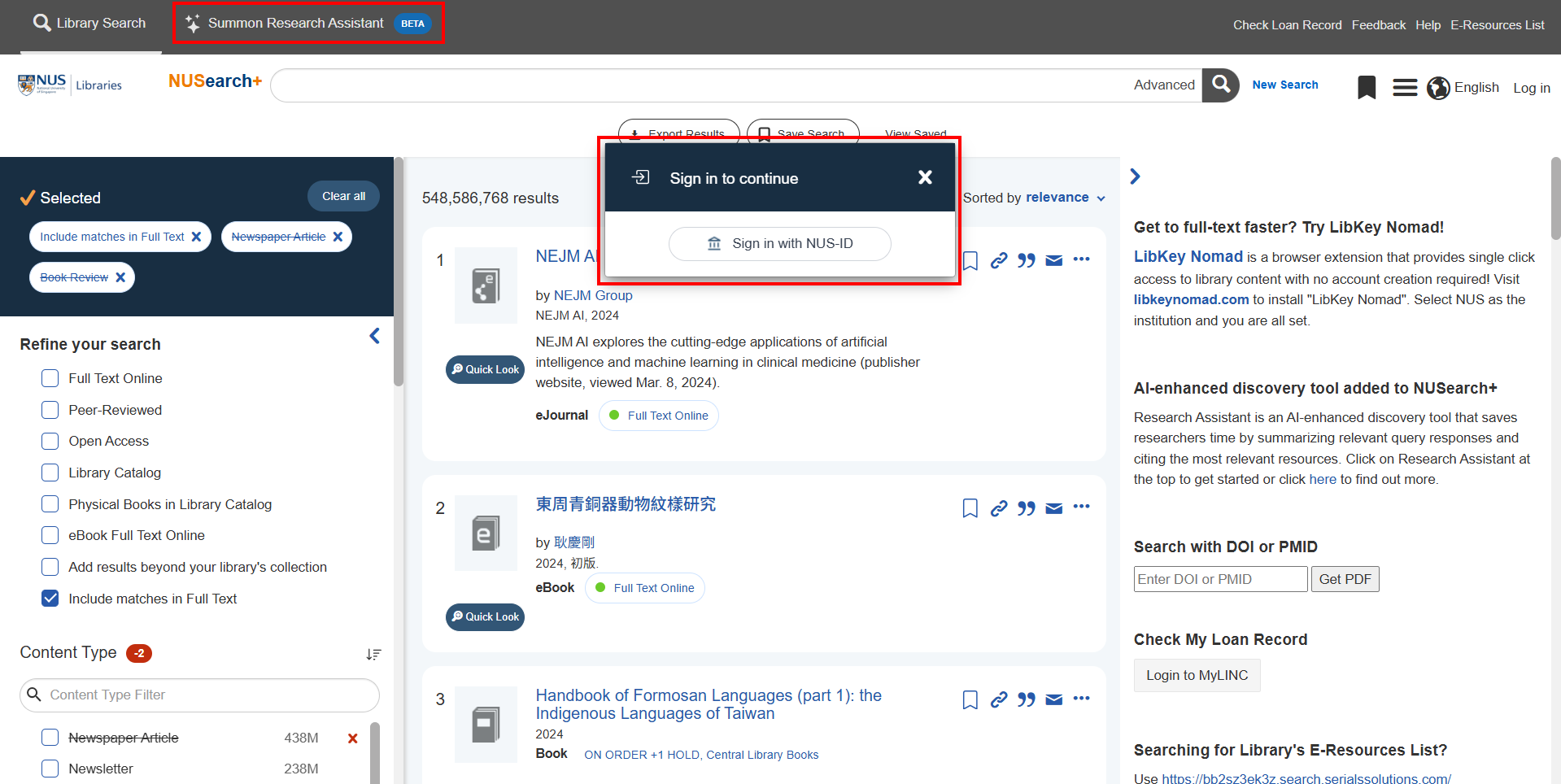
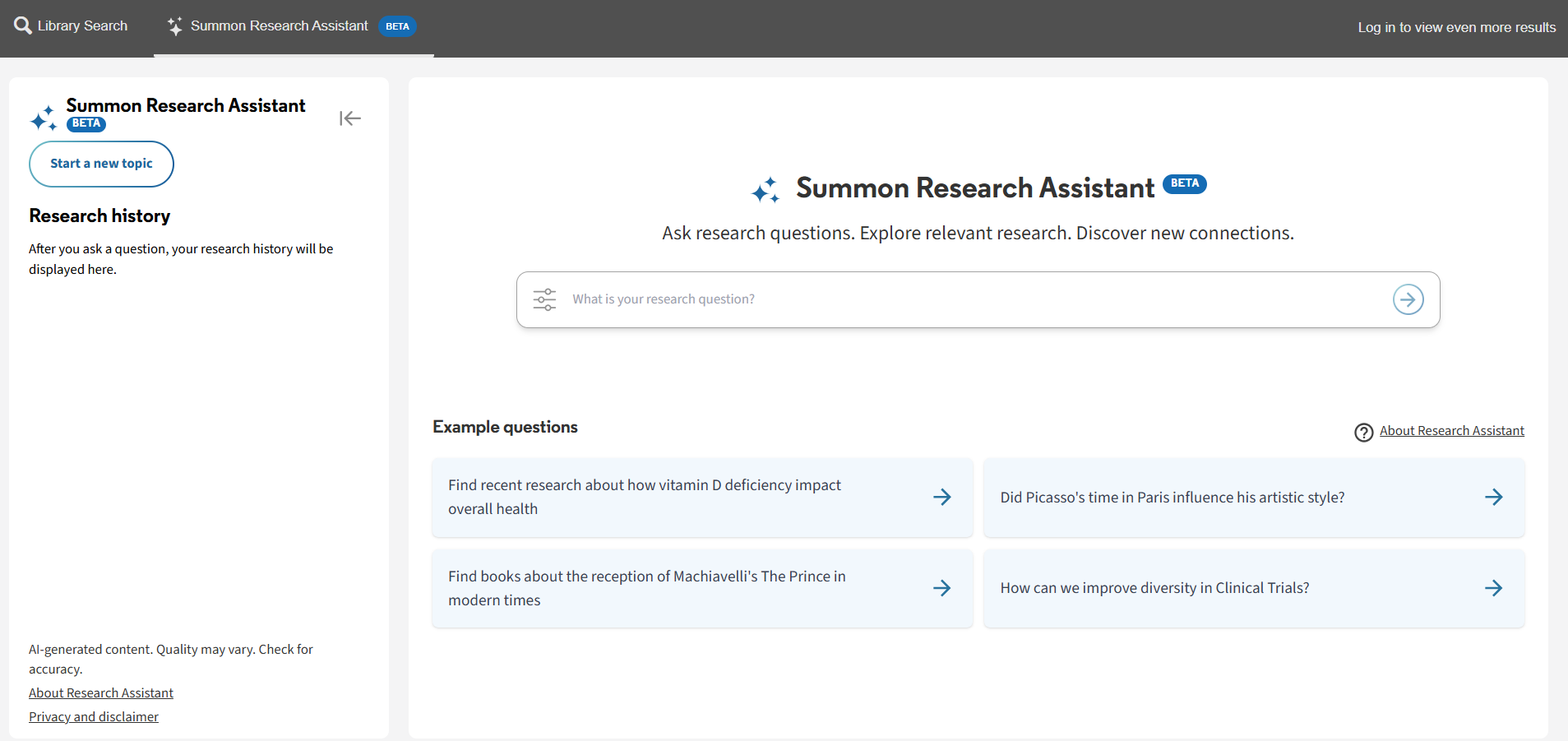
It enables users to query the Central Discovery Index (CDI) content in natural language and generate a topical overview in real-time with top 5 sources cited using Large Language Models (LLMs). LLMs have limitations and may generate inaccurate responses, users should check for accuracy and verify the responses against the source materials provided.
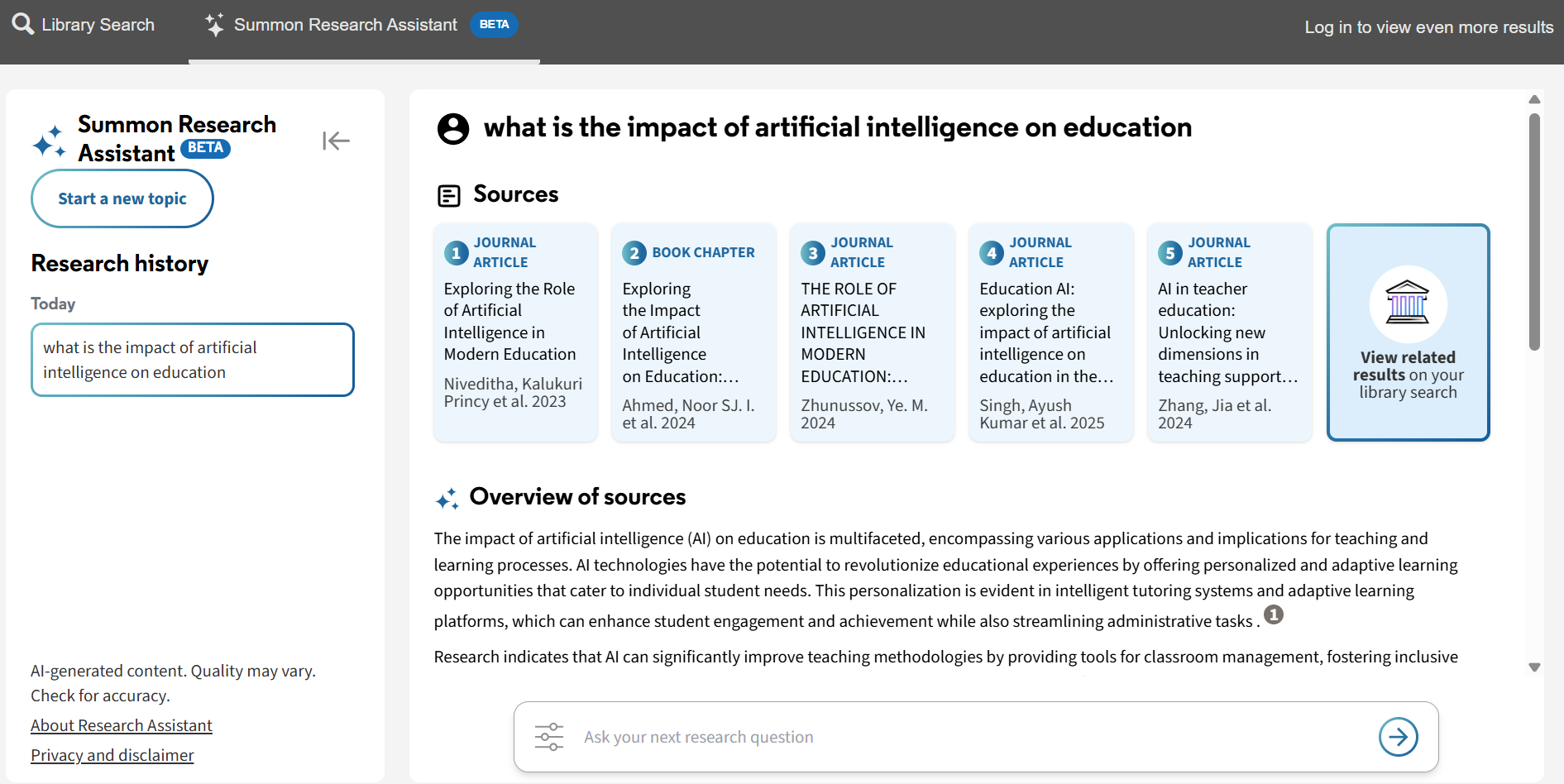
Selecting a source displays its abstract at the bottom of the section. More details and Request Options lets users display the article's full record in Summon.
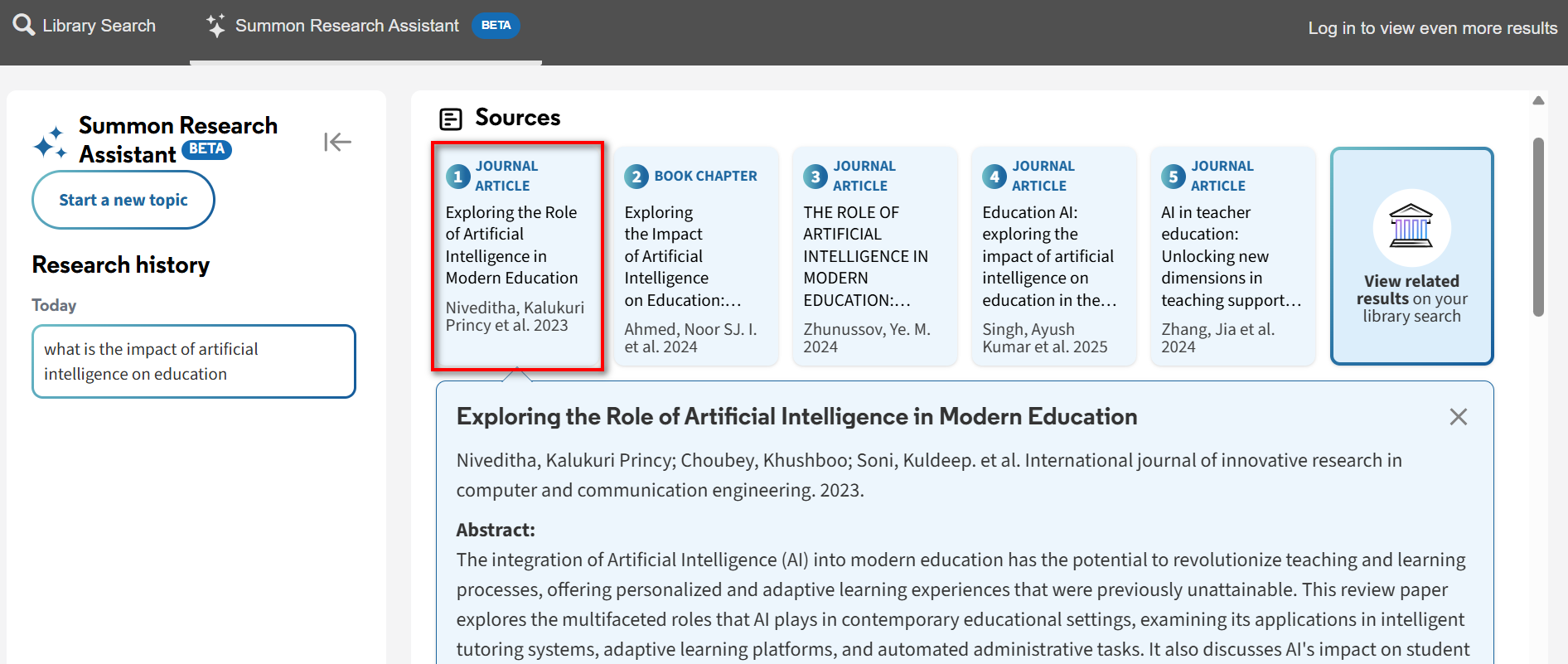
Selecting the View related results tile triggers a search in Summon. Users can then apply facets, filters, and any other Summon search functionality from the expanded results in Summon to refine the search results for this topic.
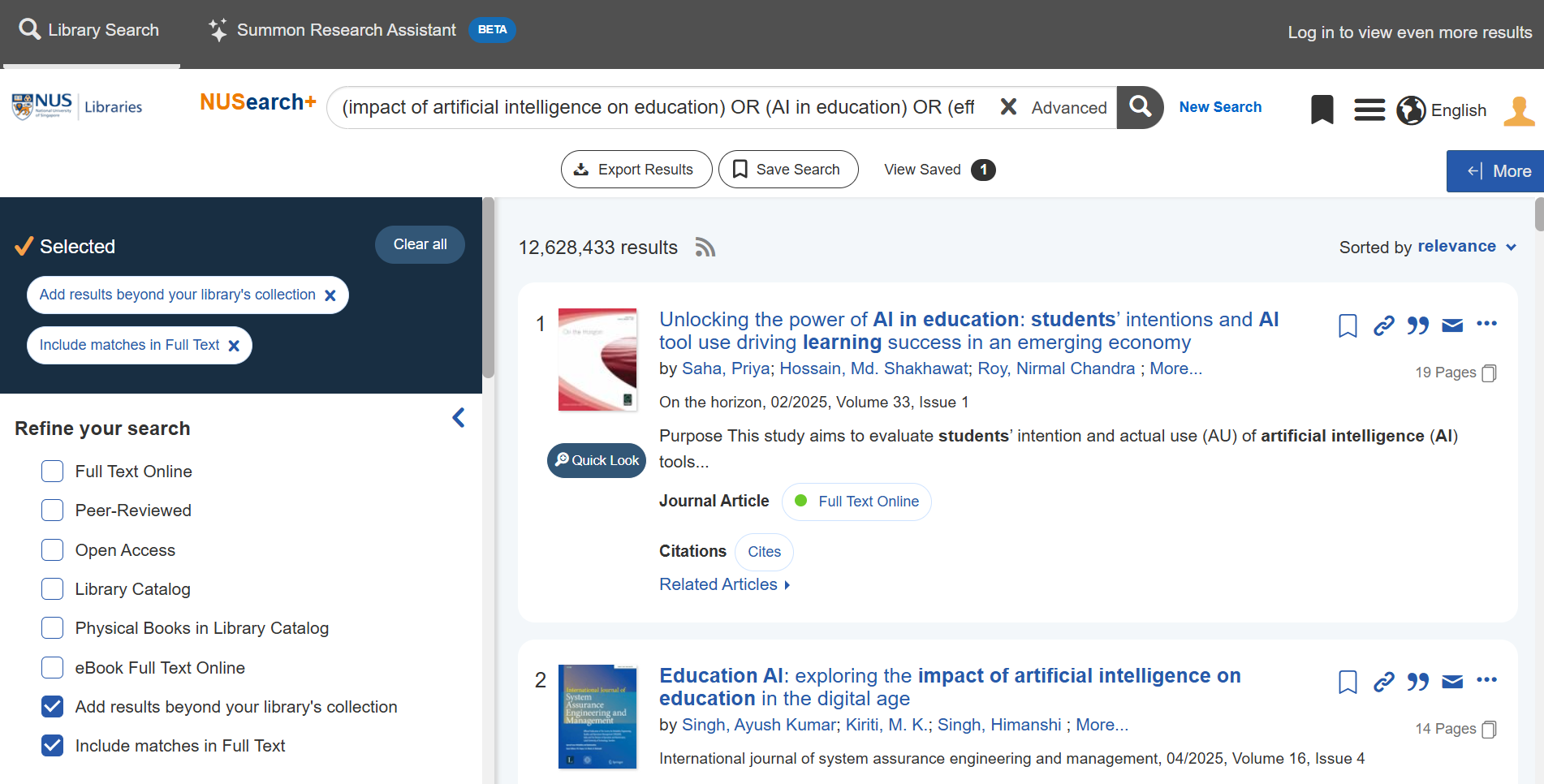
Strengths:
Limitations:
For further details, refer to Getting Started with Summon Research Assistant.
License Information: This Guide, created by NUS Libraries, is licensed CC BY-NC 4.0.
Attribution Statement: "AI in Information Discovery" by NUS Libraries is Licensed Creative Commons Attribution-NonCommercial 4.0
Write to us: Please drop us an email at askalib@nus.edu.sg if you'd like to re-use any parts of this LibGuide!